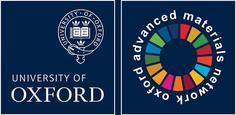Photoacoustic imaging offers several attractive features as a biomedical imaging modality including excellent spatial resolution and functional information such as tissue oxygenation. A key limitation, however, is the contrast to noise ratio that can be obtained from tissue depths greater than 1-2 mm. Microbubbles coated with an optically absorbing shell have been proposed as a possible contrast agent for photoacoustic imaging, offering greater signal amplification and improved biocompatibility compared to metallic nanoparticles. We have previously developed a theoretical description of the dynamics of a coated microbubble subject to laser irradiation. The aim of this study was to test the predictions of the model. We fabricated two different types oil-coated microbubbles and exposed them to both pulsed and continuous wave (CW) laser irradiation. Their response was characterized using ultra high-speed imaging. Although there was considerable variability across the population, we found good agreement between the experimental results and theoretical predictions in terms of the frequency and amplitude of microbubble oscillation following pulsed excitation. Under CW irradiation, highly nonlinear behavior was observed which may be of considerable interest for developing new photoacoustic imaging techniques with greatly improved contrast enhancement.
Materials by design for sustainable solutions in the energy, medical, transport, and engineering sectors




